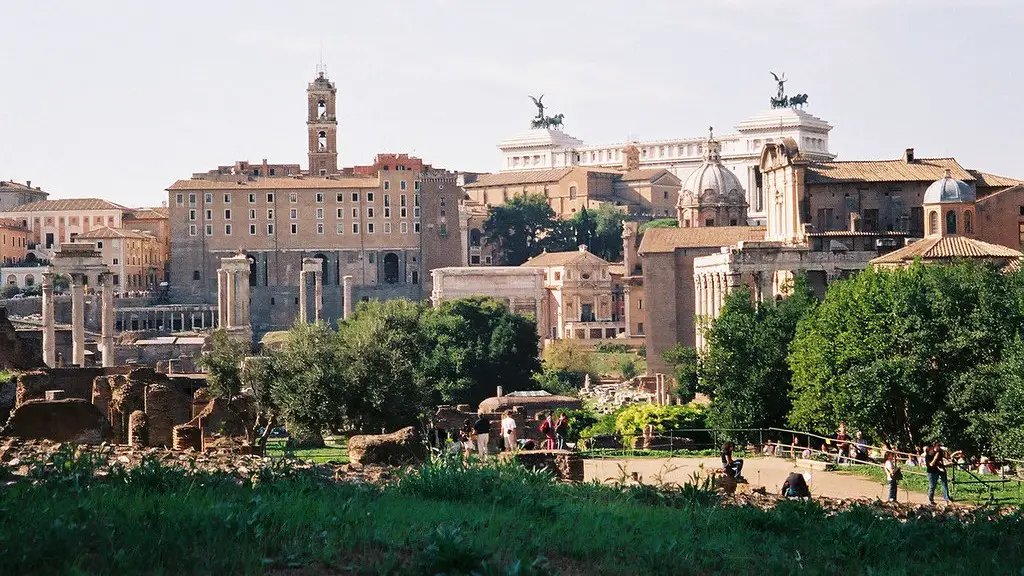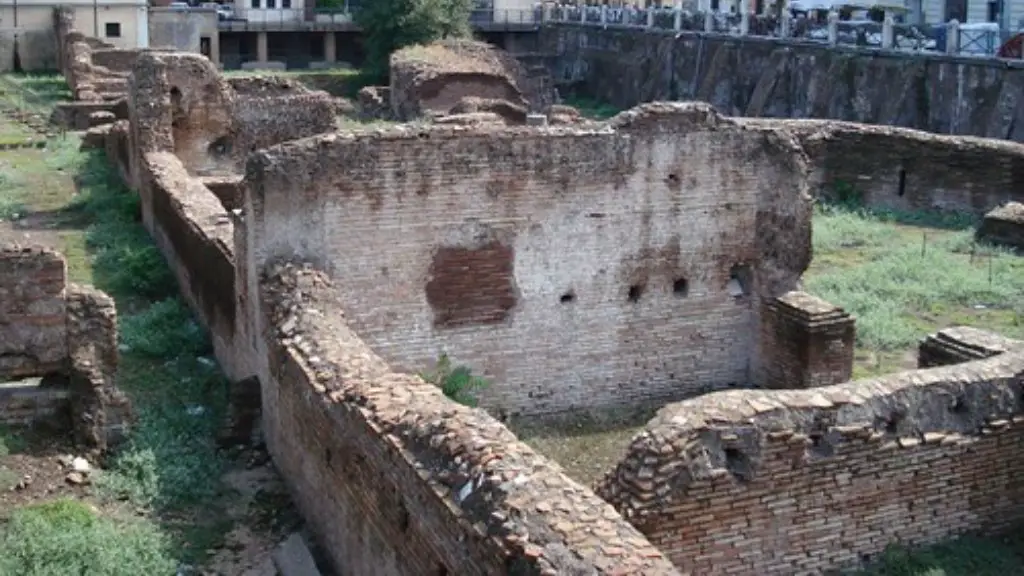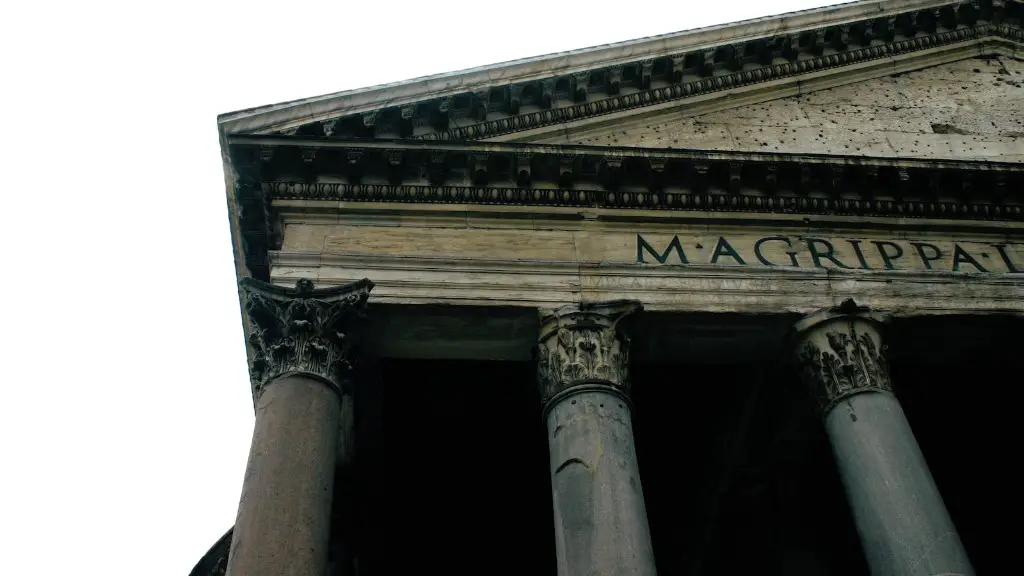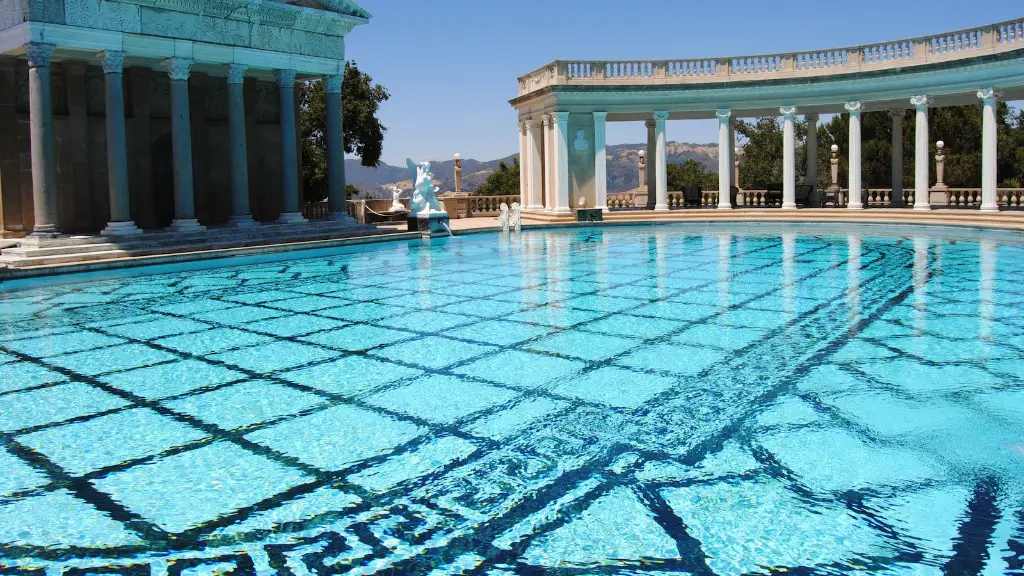The ancient Romans were one of the most advanced civilizations of their time. They made many advancements in the areas of engineering and architecture. They were responsible for the construction of many great roads, bridges, and aqueducts. They also developed a secure system of government that lasted for centuries.
The ancient Romans made a number of advancements in the building. One of the most notable advancements was the development of concrete. This allowed for the construction of a number of iconic buildings, such as the Colosseum and the Pantheon. The Romans also developed different architectural styles, such as the Corinthian and the Doric.
What did the Romans improve on building?
The development of concrete to form the structural core of buildings was one of the most important innovations in Roman architecture. Concrete is easier and quicker to use than cut stone, and its raw materials are cheap and easy to transport. This made it possible for the Romans to build large, complex structures quickly and cheaply. The use of concrete also allowed the Romans to build in a wide variety of shapes and styles, which was a major factor in the development of Roman architecture.
Roman architecture is known for its use of arches and vaults. While these features were not invented by the Romans, they were perfected by them. This allowed for the creation of large, roofed structures without the need for pillars.
What 3 things did the Romans invent in architecture
Roman architecture is characterized by its use of the arch and vault. The Romans did not invent but did master both the arch and vault, bringing a new dimension to their buildings that the Greeks did not have. The use of concrete also allowed the Romans to build larger and more complex structures than the Greeks. Among the most notable of Roman public buildings are the Colosseum and the aqueducts. The Colosseum, a vast amphitheater built of concrete and stone, could seat up to 50,000 spectators. The aqueducts, a system of channels and bridges, brought water from distant sources into the city of Rome. Triumphal arches, such as the Arch of Constantine, were built to commemorate Roman victories.
In the 1st century AD, the Romans developed brick making techniques that became the main building material for the walls of houses, Roman baths, and monuments. Opus latericium (Latin for “brickwork”) is a form of construction in which bricks of thick structure are used to face a core of opus caementicium.
Why was Rome so successful in building an empire?
Rome was able to gain its empire in large part by extending some form of citizenship to many of the people it conquered. Military expansion drove economic development, bringing enslaved people and loot back to Rome, which in turn transformed the city of Rome and Roman culture. This process of extending citizenship helped to create a sense of loyalty among the conquered people, which made it easier for Rome to govern its vast empire.
The Roman roads were a vital part of the empire, connecting all the major cities and allowing for the transport of troops, supplies, and trade. The roads were built to last, with a strong foundation and paving stones that could withstand heavy traffic. During the Roman Empire’s ascendance, they built or upgraded 80,000 km (50,000 miles) worth of highways, including the Persian Royal Road. The roads were a vital part of the empire’s success and played a key role in its expansion.
What major invention did the Romans create to help their buildings last?
The ancient Romans are famous for their longstanding structures, many of which are still standing today. They did this by inventing hydraulic cement-based concrete, which is the type of concrete we use today. This type of concrete is extremely strong and durable, and it allowed the ancient Romans to build some of the most impressive structures in the world.
Basilicas:
The basic design of a basilica was adopted from the Etruscan aisled hall, and was used both for public administration buildings and for large commercial warehouses. The basilica was a rectangular building with a wooden roof, supported by colonnades on two or more sides. At one end there was a raised dais with a chair for the magistrate, and the other end was often open to the elements, with a portico or colonnade that could be used for meetings or other purposes. The basilica was usually divided into two or three aisles by rows of columns, and the middle aisle was often twice as wide as the side aisles. This design was adopted in early Christian churches, and the term “basilica” is now used to refer to this type of church architecture.
Baths:
The Romans were famous for their public baths, which were used for both hygiene and socializing. The typical bath house consisted of a series of rooms, each with a different function. There was a changing room (apodyterium), a hot room (caldarium), a cold room (frigidarium), and a sweating room (laconicum). The floors of these rooms were
What were two key structural advances made by Roman builders
There are a few reasons why the ancient Romans built on such a large scale. One reason is that they wanted to impress and intimidate their enemies. Another reason is that they wanted to show off their wealth and power. Additionally, the large scale helped to make their buildings more stable and durable.
The technology borrowed from the Greeks, Etruscans, Celts, and others allowed the Romans to achieve high levels of technology. With limited sources of power, the Romans were able to build impressive structures, some of which survive to this day.
What did the Romans invent?
They did invent underfloor heating, concrete and the calendar that our modern calendar is based on. Concrete played an important part in Roman building, helping them construct structures like aqueducts that included arches. The calendar was another important Roman invention that is still used today.
The Romans were able to create massive bridges and aqueducts due to their use of curved roofs and large-scale arches. The arches allowed for more weight to be supported than the post-and-beam construction used by the Greeks. This allowed the Romans to create some of the most impressive engineering feats of the ancient world.
What did the Romans use in their buildings
Roman builders were some of the most skilled and innovative in the ancient world. They utilized a wide range of materials in their construction, including naturally occurring materials like stone, timber, and marble. They also used manufactured materials like brick and glass, and composite materials like concrete. The use of such a variety of materials allowed them to create some of the most impressive and durable structures in the ancient world.
The opus latericium technique consists of courses of laid bricks that are used to face a wall core of opus caementicium. This is a predominant technique during the Roman Imperial period. The bricks are usually laid in a headers and stretchers pattern, with the headers aligned vertically and the stretchers aligned horizontally.
What technology did the Romans invent to build roads and buildings?
The durability of concrete Roman structures is due to their use of concrete. Concrete is made by combining lime and volcanic ash to create a liquid which forms a stronger material when set. Many of the Roman structures that are still standing today were built with this concrete.
Architecture was crucial to the success of Rome. Both formal architecture like temples and basilicas and in its utilitarian buildings like bridges and aqueducts played important roles in unifying the empire. The construction of roads with bridges helped communication across the far flung empire.
What role did technology play in Roman architecture
Arches are one of the most important and iconic structures from the Roman era. Although they were not invented by the Romans, the Romans were the first to use them extensively in their architecture. Roman engineers were able to create very intricate and strong wooden frames in the shape of an arch, which they then used to build colosseums, aqueducts, bridges and other buildings. The use of the arch allowed for much more complex and ambitious structures to be built, which was a key factor in the Roman Empire’s success.
Roman engineers were some of the most innovative and skilled engineers of their time. They developed materials and techniques that revolutionized bridge and aqueduct construction. They also perfected ancient weapons and invented new ones. They even developed machines that harnessed the power of water. Roman engineering was truly ahead of its time.
Warp Up
The ancient Romans made great advances in the field of architecture and engineering. They developed new techniques for construction and for the use of concrete and brick. They also built many great public works, such as roads, bridges, and aqueducts.
The ancient Romans made a number of important advancements in the field of engineering and architecture. They developed new building techniques and materials that allowed them to construct large and complex structures such as the Colosseum and the aqueducts. Additionally, they pioneered the use of concrete and developed a sophisticated system of roads and highways that facilitated trade and transportation throughout the empire. These innovations had a profound impact on the development of Western civilization and remain evident in our cities and infrastructure today.





